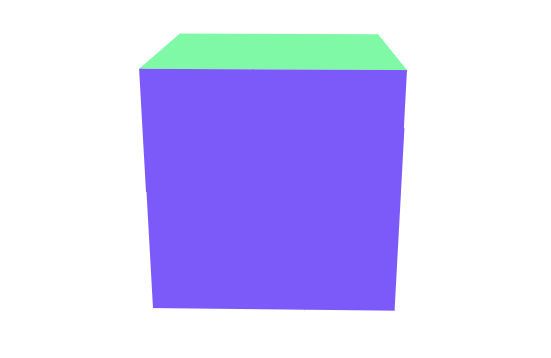WebIdiot.Online

TCGrader - The Future of Trading Card Grading Has Arrived!
🎴 Introducing TCGrader: The Future of Trading Card Grading Has ArrivedIf you’ve ever sent a card off for grading, you know the feeling — weeks of waiting, expensive submission fees, and the uncertainty of how your card will come back. What if you could skip all that? What if you could get an instant, AI-powered grade for your trading cards right from your phone or computer?Welcome to TCGrader, the world’s first GPT-powered trading card pre-grading app — a revolutionary new tool that’s changing t

How to Start a Freelance Tech Career - Analytics Insight
How to Start a Freelance Tech CareerUnlock your path to independence: A step-by-step guide to thriving in tech freelancingA recent report suggests that 63% of companies now use freelance talent to augment their workforce, and this number is expected to rise. As the gig economy continues to grow, the opportunities for freelance tech professionals have never been more abundant. Embarking on a freelance tech career offers the ultimate trifecta: flexibility, independence, and unlimited earning poten
My Journey into Frontend Development: Learning to Build with React
When I initially started learning to code, everything felt like a puzzle—confusing but exhilarating. Each new thought offered up a universe of possibilities. As I've progressed through my coding adventure, one of the most enjoyable aspects has been diving into frontend programming and learning how to create interactive user interfaces with React.** Starting from the Basics**Before React, I learnt the fundamentals of HTML, CSS, and JavaScript. These three technologies constitute the foundation o
🧩 Building a Dynamic Accordion Table in React with TanStack Table & MUI
When it comes to presenting hierarchical data in a structured and interactive way, combining accordion layouts with data tables can be an elegant solution. Recently, I built a reusable AccordionTable component using React, TanStack Table (React Table v8), and Material UI (MUI) — and I’d like to walk you through how it works.🎯 The GoalI wanted a flexible table component that:Displays summary rows that can be expanded to show child rows.Supports skeleton loading states while fetching data.Has cons
Every vibe-coded website is the same page with different words. So I made that
<a href="https://news.ycombinator.com/item?id=45622944">Comments</a>
How to Handle Pasted Images in React Without Losing Your Mind
How to Handle Pasted Images in React Without Losing Your MindRecently I was working on a freature that required pasting images into the React app input. That’s when I got to know browsers handle clipboard data inconsistently.I started playing around with the Clipboard API, trying to make image pasting smooth and reliable. You know the struggle: users expect to Ctrl+V an image and see it appear instantly, like magic. I needed a reliable way to capture and display those images without breaking the
Bringing Data to Life: How to Create Interactive Visualizations with D3.js and Chart.js
📊 From Numbers to NarrativesI still remember the first dashboard I built. It was neat, clean, and data-packed. But when I presented it, people just nodded politely — and moved on.The problem? My charts were static.No movement. No interaction. No story.Then I discovered D3.js and Chart.js, two powerful JavaScript libraries that completely changed how I visualized data. Suddenly, I wasn’t just showing numbers — I was telling stories with them.Because here’s the truth:In today’s digital world, data

6 Mac Security Changes You Should Make Right Now
<p>Most of us believe we are doing everything we can to keep our devices safe, but some of the best security features aren’t enabled or present on your Mac by default, and others require that you make a change and review your operational security from time to time.</p>

I tried the AirPods Pro 3 – they’re fantastic, but I wouldn’t trade in my Pro 2
Apple's third-generation of AirPods arrived to much acclaim, and having now listened to them, it's just highlighted how good the previous model still is.

ICYMI: the week's 7 biggest tech stories from Apple's M5 device launches to Windows 10's demise
The week's top stories from Microsoft, Nintendo, Apple, and more for October 18, 2025.
Script Analysis: “Us” — Scene-By-Scene Breakdown
Here is my take on this exercise from a previous series of posts — How To Read A Screenplay:Continue reading on Go Into The Story »
Page One: “Requiem for a Dream” (2000)
Screenplay by Hubert Selby Jr. and Darren Aronofsky, based on a book by Hubert Selby Jr.Continue reading on Go Into The Story »
Screenwriting 101: Tony Gilroy
“Screenwriting is the biggest bunch of rules anywhere. It’s gotta be 125 pages, gotta be a lot of white, gotta move like a motherfucker…”Continue reading on Go Into The Story »
Script Analysis: “The Wolf of Wall Street” — Scene By Scene Breakdown
Here is my take on this exercise from a previous series of posts — How To Read A Screenplay:Continue reading on Go Into The Story »

What does AI mean for the future of screenwriting in Hollywood? - Los Angeles Times
As AI creeps further into Hollywood, screenwriters like Billy Ray, Paul Schrader, Bong Joon Ho and Todd Haynes, along with a new class of tech disruptors, are navigating the uncertain future of storytelling.
Top 8 React Component Libraries You Should Know
ShadCNBest for: Tailwind users who want beautiful, customizable componentsWhy it’s popular:Built with Radix UI + Tailwind CSSClean design, dark mode, and flexible themingEasily composable and developer-friendly MUI (Material UI)Best for: Apps following Google’s Material DesignWhy it’s popular:Huge collection of componentsGreat theme support and accessibilityUsed in enterprise-level projects Chakra UIBest for: Beginners and devs who love writing clean UI fastWhy it’s popular:Simple synt
5 Essential Frontend Tools I Learned At My Job
<h2> TL;DR</h2><p>When I first started my job, I thought I knew most of the things that are required to handle any frontend work, especially with React. Still, I got introduced to many tools and libraries that helped me build a faster frontend with better optimization.</p><p>While I was better equipped with NextJS, my organization was using ViteJS with React. I think Vite was the choice due to faster loading and performance when they decided to choose a framework.</p><p>So, today I am going to list down some of the tools that I learned at my work. These tools are evolving frontend development in recent times, which has become an essential part of React and Frontend development.</p><p>So, let’s get started.</p><h2> 1. <a href="https://ui.shadcn.com/" rel="noopener noreferrer">ShadCN</a></h2><blockquote><p>A set of beautifully-designed, accessible components and a code distribution platform. Works with your favorite frameworks. Open Source. Open Code.</p></blockquote><p><a href="https://media2.dev.to/dynamic/image/width=800%2Cheight=%2Cfit=scale-down%2Cgravity=auto%2Cformat=auto/https%3A%2F%2Fdev-to-uploads.s3.amazonaws.com%2Fuploads%2Farticles%2Fm429rdyd7w9ibztnh6xh.png" class="article-body-image-wrapper"><img src="https://media2.dev.to/dynamic/image/width=800%2Cheight=%2Cfit=scale-down%2Cgravity=auto%2Cformat=auto/https%3A%2F%2Fdev-to-uploads.s3.amazonaws.com%2Fuploads%2Farticles%2Fm429rdyd7w9ibztnh6xh.png" alt="ShadCN" width="800" height="403"></a></p><p>When I started, I was familiar with some of the component libraries like Material UI, Ant Design, and proficient in Chakra UI. But my organization was previously using Material UI and shifting to ShadCN. There, I heard about the ShadCN for the first time.</p><p>Initially, it was new to me, so I learned about it while building a component with ShadCN. Now, it has become my go-to component library replacing Chakra UI. It gives so much flexibility and control over the component, making component build from ShadCN unique to each project and easy to implement. </p><p>Here are some of the key features of ShadCN:</p><ul><li><strong>Beautiful Design</strong> – Simple and minimalistic design that can easily be used directly in a modern design UI.</li><li><strong>Customizable</strong> – You can easily customize everything as the code is in your project.</li><li><strong>Headless Support</strong> – Built on Radix UI for full accessibility.</li><li><strong>Dark Mode Ready</strong> – Works seamlessly with light/dark themes.</li><li><strong>Developer-Friendly</strong> – Easily integrate with TailwindCSS and Typescript.</li></ul><h2> 2. <a href="https://auth0.com/" rel="noopener noreferrer">Auth0</a></h2><blockquote><p>Auth0 is an easy to implement, adaptable authentication and authorization platform</p></blockquote><p><a href="https://media2.dev.to/dynamic/image/width=800%2Cheight=%2Cfit=scale-down%2Cgravity=auto%2Cformat=auto/https%3A%2F%2Fdev-to-uploads.s3.amazonaws.com%2Fuploads%2Farticles%2Fetiwfdyw5p4p3ho2izku.png" class="article-body-image-wrapper"><img src="https://media2.dev.to/dynamic/image/width=800%2Cheight=%2Cfit=scale-down%2Cgravity=auto%2Cformat=auto/https%3A%2F%2Fdev-to-uploads.s3.amazonaws.com%2Fuploads%2Farticles%2Fetiwfdyw5p4p3ho2izku.png" alt="Auth0" width="800" height="387"></a></p><p>My organization’s primary project uses their own Auth API built in Rails, but for a subproject, they used Auth0 for quick setup. During this time, I learned more about Auth0 and its implementation.</p><p>I have used supabase for all-in-one from Auth to Database, but having more control over Authentication with Auth0 was perfect. It gives a different way of Authentication that you can use from the frontend or even machine-to-machine authentication.</p><p>Here are some benefits of Auth0:</p><ul><li><strong>Secure & Scalable</strong> – Industry-standard authentication with enterprise-level scalability.</li><li><strong>Easy Integration</strong> – Works seamlessly with any tech stack (e.g., React, Next.js, Node.js).</li><li><strong>Social Login Support</strong> – Easily add Google, GitHub, Facebook, and more.</li><li><strong>Customizable UI</strong> – Use prebuilt or fully custom login screens.</li><li><strong>MFA Ready</strong> – Built-in multi-factor authentication for enhanced security.</li></ul><h2> 3. <a href="https://tailwindcss.com/" rel="noopener noreferrer">TailwindCSS</a></h2><blockquote><p>A utility-first CSS framework packed with classes like flex, pt-4, text-center and rotate-90 that can be composed to build any design, directly in your markup.</p></blockquote><p><a href="https://media2.dev.to/dynamic/image/width=800%2Cheight=%2Cfit=scale-down%2Cgravity=auto%2Cformat=auto/https%3A%2F%2Fdev-to-uploads.s3.amazonaws.com%2Fuploads%2Farticles%2Fbamzubxzwnt66gcf7von.png" class="article-body-image-wrapper"><img src="https://media2.dev.to/dynamic/image/width=800%2Cheight=%2Cfit=scale-down%2Cgravity=auto%2Cformat=auto/https%3A%2F%2Fdev-to-uploads.s3.amazonaws.com%2Fuploads%2Farticles%2Fbamzubxzwnt66gcf7von.png" alt="TailwindCSS" width="800" height="402"></a></p><p>Can you believe that I didn’t know tailwindCSS when I started my first job? TailwindCSS is blowing from the past few years, and I learned it late last year. Previously, I used to write CSS, proper CSS in <code>.css</code> file. I knew Tailwindcss, but I liked the concept of separating HTML and CSS with reusing CSS, which is easy with normal CSS. For this particular reason, and also thinking that the code will be messier with introducing inline CSS with it.</p><p>My organization was using SCSS and tailwindCSS both but they were moving to tailwindCSS, so I also started learning and implementing it. Over time, I liked its simplicity, where you can just add the style as you like. It is easy to apply CSS with classes that make it a short code. </p><p>Now, I use tailwindCSS in all my projects to create the layout. But I still love the concept, like defining style and using everywhere with ease, which we can do with the classname.</p><h2> 4. <a href="https://recharts.org/en-US" rel="noopener noreferrer">Rechart</a></h2><blockquote><p>A composable charting library built on React components</p></blockquote><p><a href="https://media2.dev.to/dynamic/image/width=800%2Cheight=%2Cfit=scale-down%2Cgravity=auto%2Cformat=auto/https%3A%2F%2Fdev-to-uploads.s3.amazonaws.com%2Fuploads%2Farticles%2Fc6wyb4g276zvvu033mei.png" class="article-body-image-wrapper"><img src="https://media2.dev.to/dynamic/image/width=800%2Cheight=%2Cfit=scale-down%2Cgravity=auto%2Cformat=auto/https%3A%2F%2Fdev-to-uploads.s3.amazonaws.com%2Fuploads%2Farticles%2Fc6wyb4g276zvvu033mei.png" alt="Rechart" width="800" height="413"></a></p><p>Completing the trinity of frontend development with Rechart along with ShadCN and TailwindCSS. Previously, I used to look for charting libraries that are easy to integrate and customize the CSS. I have used chart.js, Victory, and others along the way. </p><p>My organization provides a lot of financial data to its clients, so the chart is quite essential. I started using rechart with ShadCN pre-built CSS, and it was amazing, like good visuals with easy customizable, and a variety of charts that were there. </p><p>Here are some benefits of Rechart with ShadCN:</p><ul><li><strong>Modern UI + Data Viz</strong> – Combine beautiful, accessible ShadCN components with powerful, responsive charts from Recharts.</li><li><strong>Fully Customizable</strong> – Tailwind CSS + Recharts props let you fine-tune both layout and visual styling.</li><li><strong>Consistent Design System</strong> – ShadCN ensures a unified design language while Recharts integrates visually inside cards, dialogs, or tabs.</li><li><strong>Developer Experience</strong> – Easy to implement with TypeScript support and composable APIs from both libraries.</li><li><strong>Dark Mode Ready</strong> – Charts and UI components can be styled to match light/dark themes using Tailwind's utility classes.</li></ul><h2> 5. Chrome Devtools</h2><blockquote><p>Simplifying the web to help you build, grow, and innovate.</p></blockquote><p><a href="https://media2.dev.to/dynamic/image/width=800%2Cheight=%2Cfit=scale-down%2Cgravity=auto%2Cformat=auto/https%3A%2F%2Fdev-to-uploads.s3.amazonaws.com%2Fuploads%2Farticles%2Fq0ocsj24ds9gbt239bj8.png" class="article-body-image-wrapper"><img src="https://media2.dev.to/dynamic/image/width=800%2Cheight=%2Cfit=scale-down%2Cgravity=auto%2Cformat=auto/https%3A%2F%2Fdev-to-uploads.s3.amazonaws.com%2Fuploads%2Farticles%2Fq0ocsj24ds9gbt239bj8.png" alt="Chrome Devtools" width="800" height="379"></a></p><p>You code less but debug more. These lines perfectly describe the state of software development. So, having a perfect tool at your arsenal can help you in reducing time by a hefty margin while debugging is essential. When I used to code previously, I most often relied on the console to find errors or determine whether a particular function was executing or not. </p><p>At my new organization, l learned from colleagues how to effectively use other Chrome DevTools too to maximize the debugging efficiency. Along with this, I also started using <a href="https://chromewebstore.google.com/detail/react-developer-tools/fmkadmapgofadopljbjfkapdkoienihi" rel="noopener noreferrer">React developer tools</a> and <a href="https://chromewebstore.google.com/detail/redux-devtools/lmhkpmbekcpmknklioeibfkpmmfibljd" rel="noopener noreferrer">Redux Devtool</a>.</p><p>Here are some of the Chrome extensions and tools that you can use:</p><ul><li><strong>Network Tab</strong>: It provides the list of all the calls that are made by the page, including for assets or any SSR calls too. It lists all the API calls which can be used to know and verify the structure of the API and calls. </li><li><strong>Source Tab</strong>: Easily easiest way to know all the states or execution of the particular function or block of code is through source by putting break breakpoint. It can pause at that line of code while providing state, params, and other values. </li><li><strong>Styles in Element</strong>: For UI issues, I can directly manipulate in the browser and see whether the fix is working or not, then write the code.</li><li><a href="https://chromewebstore.google.com/detail/react-developer-tools/fmkadmapgofadopljbjfkapdkoienihi" rel="noopener noreferrer">React Developer Tools</a>: Easily the best Chrome extension for debugging React applications. It not only allows you to inspect the React component hierarchies but also provides hooks and state information.# Connect with Me🚀</li></ul><p>Let's connect and stay informed on all things tech, innovation, and beyond!</p><ul><li><a href="https://twitter.com/surajondev" rel="noopener noreferrer"><strong>Twitter</strong></a></li><li><a href="https://www.linkedin.com/in/surajondev/" rel="noopener noreferrer"><strong>LinkedIn</strong></a></li></ul><p>Also, I am open to writing freelance articles if you are interested; then contact me via email or social media.</p><h2> Conclusion</h2><p>During this time, I was able to learn these powerful tools and that helped me transform my productivity while building frontend. The transition to tools like <strong>ShadCN</strong>, <strong>TailwindCSS</strong>, and <strong>Recharts</strong> didn't just modernize my tech stack—it fundamentally improved the way I build and debug applications. It also indicates that frontend development is always evolving and you need to learn constantly to match the current state of development. </p><p>I hope this article has helped you in finding new tools. Thanks for reading the article. </p>
How to Create a React + Vite Application Using Command Prompt
Follow these steps to set up a React project using Vite via Command Prompt:Step 1: Set Up the Project DirectoryCreate a new folder where you want to build your React project.Open the newly created folder and copy the folder path.Open Command Prompt.Navigate to the folder using the cd command: cd Example: cd C:\Users\YourName\Documents\ReactProjects\MyAppStep 2: Create the React + Vite ProjectRun the following command to create a new Vite project: npm create vite@latestWhen prompted with âś” Ok to

11 JavaScript Animation Libraries For 2019
Some of the finest JS and CSS animation libraries around.

Christopher Nolan Scripts to Read and Download | No Film School
What are the best Christopher Nolan scripts to read?








